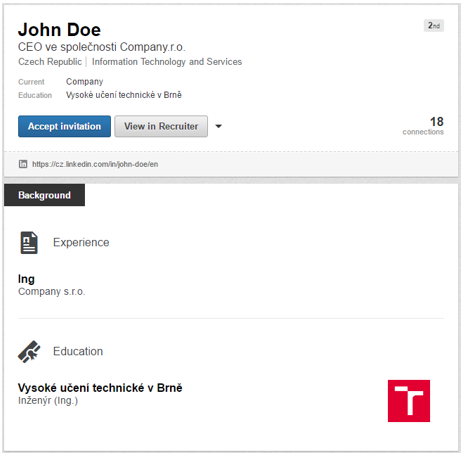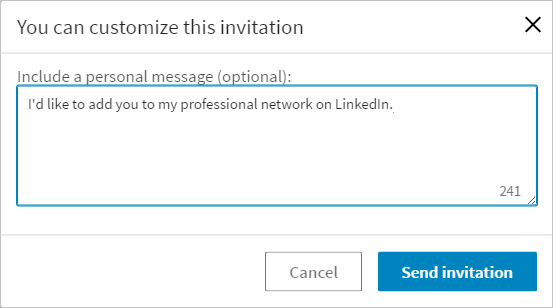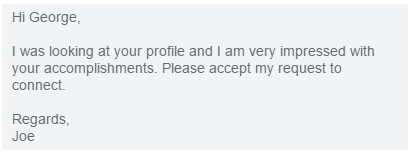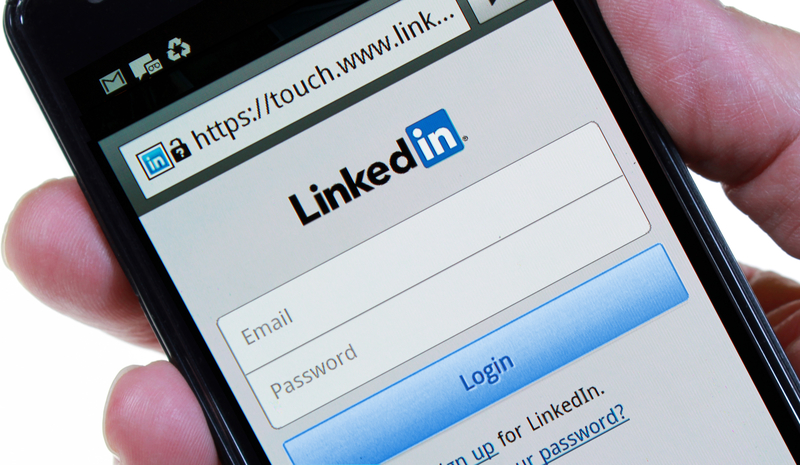LinkedIn is a powerful networking platform and every week we create new virtual connections with people who send us invites and with those we would like to add to our network.
If you send a LinkedIn invitation to a friend or work colleague, it is often accepted within 24 hours. Then you see some influential people on LinkedIn and you think that it would be great to connect with them.
You read all their articles on LinkedIn Pulse and you would love to meet them if they are available, or just chat with them over LinkedIn. Maybe you are just expanding your network and you find some interesting people that you would like to add to your network, in case you ever find yourself looking for a job.
So, you decide to send them an invitation.
After two weeks, they are still not in your network and you are wondering why they did not accept your invitation. You aren’t sure whether it is just pending or if they declined. Maybe they did not even receive notification from LinkedIn, or perhaps they are on vacation, or just busy.
Or maybe you just did something wrong. You never get a second chance to make a first impression!
So, here are the main 10 reasons people decline invitations. Please note: I changed the names of people in these invitations and examples.
1 – Incomplete LinkedIn Profile
Do you have a complete profile? Not sure? Check again. One reason your invitations are declined is that your profile is missing a title, job description, and perhaps even good content.
Make sure that your photo is full-size, professional and not a random (fake) picture from the Internet. Also, ensure that your work history has useful details. It also pays to include recommendations and endorsements from several people.
The more complete your profile, the better the chance that your invitation will be accepted. People want to see a profile that reads well and communicates serious thoughtfulness. If you got an invite from a person with just a name, would you hit the “Accept” button?
2 – A Lack of Proper Grammar
Even though you are not writing a thesis or an essay, proper spelling and punctuation are still of the utmost importance. Try to also avoid writing in capital letters, which is often interpreted as screaming.
Trust me; no one wants to see this in their inbox. Unless you have good reason to shout, keep to the lower case. And if you must use capital letters, do so sparingly.
Also, use formal language if you are approaching people you don’t know. Casual, slang-filled invitations will only get you rejections. If you are not sure about grammar or typos, you can always check your spelling and grammar in Word or on Grammarly.
3 – Using a Generic Message
Many people are tired of seeing ubiquitous template LinkedIn messages. That’s why you need to create a “hook” in your invitation. Have you read the person’s post or article? Do you have a contrary opinion to a view or opinion that they expressed? Do you live in the same city as this person? Create a personalized hook to draw this person in.
Unless you have communicated with this person outside of LinkedIn, and they can clearly remember you, then the generic message might be just fine.
Here’s the LinkedIn Template Message (and these are the most boring 11 words in the English language):
LinkedIn gives you the opportunity to add your own notes to the LinkedIn invitation, so it really behooves you to do it.
4 – People are not Using LinkedIn Daily
LinkedIn has 500+ million users; from that number, only 106 millions are active users (Statista report, April 2017). From that 106 million:
- 53 percent of active users spend between 0-2 hours weekly on LinkedIn;
- 22 percent spend 3-4 hours weekly; and,
- 10 percent spend 5-6 hours (survey from Statista March 2016).
As you can see from these statistics, the only people who spend a lot of time on LinkedIn are recruiters, because it’s their work tool. But candidates? Not so much.
Also consider this: One of the reasons why your invitation may not have been accepted just may be bad timing. You can send the invite out on a Monday, but if the person you’re sending it to is not logged in to LinkedIn until Friday, your LinkedIn invitation will not be seen until then. Given that, your invitation could be easily overlooked.
5 – Not Getting the Name Right
It’s bad enough that you are sending someone a template message, but misspelling their name is just not acceptable.
Of course, this can happen and people can overlook the error in the invite, but some take it seriously even if they don’t treat your obvious grammatical errors like they are a big deal. If you are going to get anything wrong, it should not be the name of a potential connection in a LinkedIn message.
6 – Offering a Job or Selling Something
If your main intention is to sell, do not make this known up front. It is better to connect first. Many people dislike opening their inboxes only to see a template sales pitch disguised as a LinkedIn invitation.
You should focus on connecting instead of trying to sell. And if you are planning to sell, don’t do it just a few minutes after your invitation has been accepted — wait at least one day.
If you are offering a job, don’t use a LinkedIn invitation. This is not the right venue, especially when you are not adding any info to the invite.
I was fooled once with this type of invite and got an offer for selling Herbalife.
Candidates are also getting template messages such as, “Hi, I have a job offer for you! Please add me to you network.” After they accept the invite, there is radio silence. And if you are using the same template as these spammers, don’t expect that candidates will treat you any differently, especially if they already have had that bad experience.
7 – You Are a Complete Stranger
If you are sending random invitations to people without speaking with them first, you will not get a lot of acceptances. We’ve all received connection requests from strangers, and we know that sometimes it’s better to steer clear and skip the connection.
Also, asking someone you are still trying to add to your connections to lunch or dinner will make the firewall stronger. So yes, your message was compelling and they will want you to be in their connections because they like your profile … but a lunch or similar request in the first invitation is just taking it too far.
Accepting your invitation may mean that they still have to come up with a polite way of declining your request, and that’s something that no one likes to deal with. Maybe they like the idea of lunch with you but you have to wait for them to check their calendar. Then you know the rest of the story — something happened along the line and they forgot about your invitation.
Remember: Do not make people commit to anything in your LinkedIn request other than accepting your initial invitation. Most people do not want to meet unless they have first developed a relationship with you.
8 – You are Too Impatient
Every month, I get at least one invitation that I consider a little bit pushy.
For example, I sometimes receive a LinkedIn invitation with a note asking me to add someone to my network. I don’t accept the invitation, but a few minutes later I get an email with a proposal for cooperation, and then another a few minutes later requesting a connection on Skype. Before I’m able to finish my answer on that email, my phone notifies me about a new Facebook friend request from that same person.
If you are impatient, just send the email — and nothing else. Sending so many requests to a stranger on so many social media sites is never a good approach. Don’t ruin your one and only personal brand.
9 – You Are Not From the Same Field/Location
LinkedIn was built on the idea that people will connect; however, after they implemented the connection limit (30,000 connections), people became more selective about who they add to their network.
If you are working in a Lesotho bank, and you would like to connect with a software engineer from Canada, there is a high probability that your invitation to a Canadian software engineer will never be accepted.
Networking is not playing Pokémon; you don’t have to catch them all and accept all the invites you receive. The same is true of the people you are getting invites from. You should always add a note stating why they should add you into their network.
10 – You Are Not Putting in Extra Effort
If you view the profile of the person you are trying to connect with, this will raise the possibility of your invitation being accepted. If you have never visited their profile and just sent an invitation, it could appear to the recipient as though you are just hitting the “Connect” button.
Have you actually tried to connect more than once? Maybe they didn’t get your first message. If they have not replied, give it some time and then try again. Some of your prospective contacts may assume that the first invitation was a scam, and a second invitation might change their perspective.
A follow-up message after they have accepted might also be helpful and shows that you are committed to building a relationship with them.
Final Thoughts
LinkedIn is still a great networking platform that you can leverage for your personal and business needs. Having the right connections is very important in getting the most out of that platform.
Always ensure that your LinkedIn message is personalized whether or not you know the recipient personally. Personification is a very important component when you reach out to somebody, plus, your message won’t look like a template.
If you have a mutual connection, mention the name of this person and keep your message short while providing them with a “hook” to bite on. Then, do your best to follow up.
Sometimes, the reason your invitation was not accepted could be because the person you are trying to connect with is not actually using LinkedIn. They may have created an account but have stopped using it. In this case, the message you sent may have nothing to do with why your invitation is pending.
Always remember: Not everyone checks their LinkedIn profile constantly. So, don’t take it personally if they don’t respond.
Authors
Jan Tegze
Jan Tegze is Senior Recruiting Manager at SolarWinds, a company that “provides powerful and affordable IT management software to customers worldwide, from Fortune 500 enterprises to small businesses, managed service providers (MSPs), government agencies, and educational institutions.” He is also the author of the book Full Stack Recruiter: The Modern Recruiter's Guide, published October 2017. Jan has extensive experience in full life cycle recruiting, and broad knowledge in international recruiting, sourcing, recruitment branding, marketing and pro-active innovative sourcing techniques. Connect with him on LinkedIn or follow him on Twitter @jantegze .
Recruit Smarter
Weekly news and industry insights delivered straight to your inbox.







